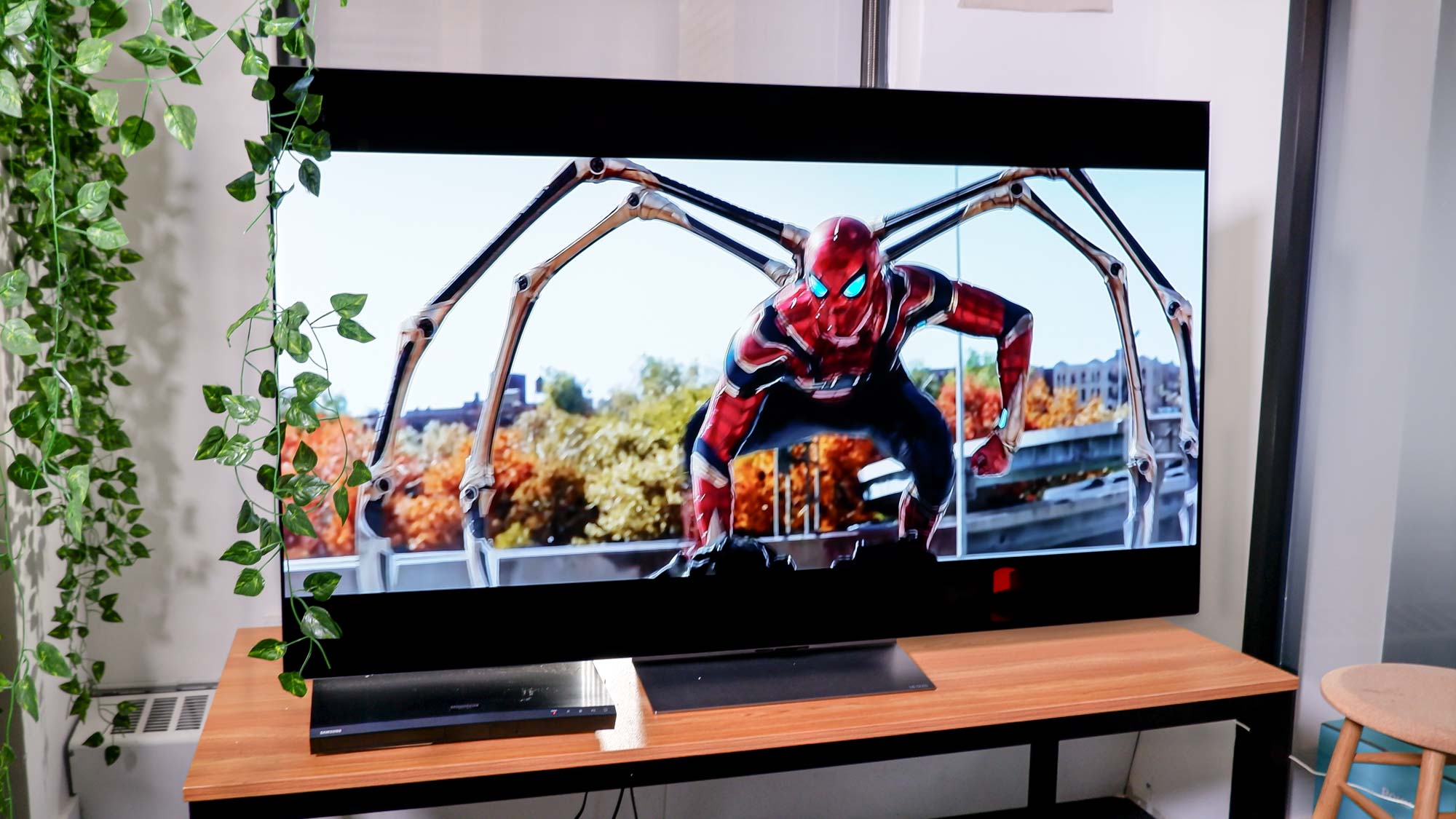OLED TVs just had their best year yet — here's why
There's no better time to buy an OLED

We saw all sorts of TV innovations in 2023, but no single display technology had as much appeal this year as OLED. The OLED TV category reached key milestones that make buying an OLED right now better than ever before.
While we’re excited to see where Samsung takes QD-OLED technology, it’s OLED alone that we think had its best year yet. Most of the innovation is credited to LG, the manufacturer of the top-rated LG C2 OLED TV and LG G2 OLED TV. It’s these sets that achieved brightness and size options not previously available for OLED TVs.
When it comes to QLED vs. OLED, there are still several reasons a QLED TV might be better for you. But if you’ve been wondering whether you should finally make the switch to OLED, here are the top reasons that there’s no time like present.
More size options
In 2022, we witnessed the launch of both the largest and smallest OLED TVs ever. First, we saw the ginormous, 97-inch G2 OLED TV that made us forget about going to the movie theater. This premium TV commands a premium price — $25,000 — making the smaller configurations (a.k.a. average TV sizes) seem like steals in comparison. And as with anything, these kinds of TVs start out expensive, but the price will drop as the market expresses interest and sends the product into mass production.
On the other hand, the 42-inch LG C2 OLED TV and 42-inch Sony A90K OLED TV are the two smallest OLED TVs yet. The last we checked, you can buy these sizes of the C2 for $799 and the A90K for $1,149 with current OLED TV deals. There are standalone gaming monitors that lack smart TV features that are more expensive. In other words, you might be better off buying a 42-inch OLED gaming TV than a dedicated gaming monitor.
Brighter picture
OLED has long been praised for the ability to produce rich, inky blacks thanks to self-emitting pixels; however, this often comes at the expense of brightness. OLED TVs don’t have a positive reputation for holding up against lots of natural lighting the same way that Mini-LED, QLED or even standard LED TVs do. But in 2022, LG successfully made OLED TVs brighter.
The OLED evo panel on the LG G2 OLED TV made for the brightest OLED we’ve ever seen, going off seeing it side-by-side with the previous LG G1 OLED TV and LG C1 OLED TV. In the lab, the LG C2 OLED TV reached exactly 800 nits in Standard mode in a 10% window with HDR content. That’s amazing for an OLED TV, and an improvement from the 749 nits scored in the same 10% window on the C1. From our understanding, LG has figured out a way to better dissipate heat across the panel, allowing pixels to get brighter without causing the dreaded OLED burn-in.
Get instant access to breaking news, the hottest reviews, great deals and helpful tips.
Fewer burn-in worries
Speaking of burn-in, in 2022 we lost nearly all cause for concern. While older OLED TVs may still be susceptible to burn-in, TV manufacturers seem to understand that it's simply unacceptable for current-gen products to suffer from the same image retention problem.
Now, there are more settings than ever to help you take care of your OLED panel. LG OLED TVs and the Samsung S95B OLED TV have a feature that detects static logos (such as those on network news channels) and automatically lowers their luminance to lessen strain on the TV's pixels. Both companies also have a version of a pixel shift feature, which moves the picture ever-so-slightly over time to battle image retention.
What's next for OLED?
Despite what you might hear, OLED technology hasn't hit its peak. At least, that's probably the case. Year after year, the manufacturers prove there is still room to make OLED TVs better and thus more appealing to a greater pool of customers.
That said, QD-OLED is positioned to shake up the OLED market as we know it. By introducing quantum dots to the equation, an OLED panel should be able to get even brighter without sacrificing color volume. We weren't overly impressed by the QD-OLED TVs we saw this year, but we could see the companies up the ante in 2023.
At the very least, we know the world’s first wireless OLED TV is about to make its debut.

Kate Kozuch is the managing editor of social and video at Tom’s Guide. She writes about smartwatches, TVs, audio devices, and some cooking appliances, too. Kate appears on Fox News to talk tech trends and runs the Tom's Guide TikTok account, which you should be following if you don't already. When she’s not filming tech videos, you can find her taking up a new sport, mastering the NYT Crossword or channeling her inner celebrity chef.
